When moles change shape or colour, dermatologists often take tissue samples to rule out the possibility of skin cancer. But is it always necessary? Magnosco GmbH has developed a device that uses a combination of laser light and artificial intelligence to make diagnosis easier.
To get to Magnosco GmbH, you have to cross the former grounds of the Academy of Sciences of the German Democratic Republic in Berlin-Adlershof. The streets here are named after Nobel Prize winners. In 2018, the team of twelve developers, scientists, biologists and physicists in one of the nondescript buildings had reason to celebrate: the first DermaFC, their device for skin cancer diagnostics, was supplied to a doctor's office.
It's been a long road to get here. Back in 2010, the future founder Dr Hans-Georg Giering was already considering continuing a research project on dermatofluoroscopy in the form of an independent company. The procedure is a method used to detect skin cancer with laser light. The decision to further develop the functional prototype into a product ready for series production led to the foundation of Magnosco in 2014. Today the company is headed by Thomas Diepold and Dr Sebastian Ahlberg.
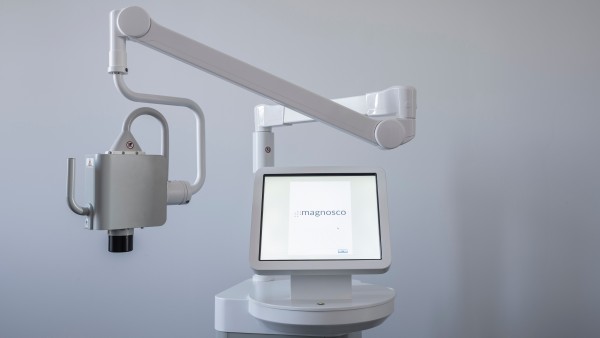
The Magnosco device excites melanin fluorescence in the skin, making it possible to detect diseased cells.
Laser makes melamin glow
Melanomas are the most common form of cancer worldwide with more than three million cases a year. If they go unnoticed, the mini-tumours quickly metastasise and the patients have little chance of survival, making early detection vital. But even experienced dermatologists are not always sure whether skin discoloration is cause for concern. As a result, a tissue sample is usually taken and analysed in the laboratory. Fortunately, the results are negative in 90% of cases. But patients aren't just left with a small scar. They have undergone an agonising period of uncertainty, as it often takes up to two weeks to get the results. Valuable time that is wasted if treatment needs to be started.
This is where Magnosco comes in. Dr Sebastian Ahlberg explains what happens inside the new device: "The melanin in our skin is responsible for pigmentation. We stimulate the melanin fluorescence in the skin with a special laser technology which makes the melanin glow. The light emitted is captured by a detector. Our special method is two-photon stimulation, in which two short energy impulses are emitted in quick succession onto the area of skin under examination. This allows us to assess melanin fluorescence without being affected by the fluorescence of other substances in the skin. If the melanin fluorescence is more visible in the green or bluish range, the cell is healthy. Stronger fluorescence in the red range is an indicator of diseased cells."
Read more under the gallery.
Dr Sebastian Ahlberg (left) and Thomas Diepold manage the company.
An algorithm calculates a score
This form of analysis is combined with artificial intelligence (AI). To this end, Magnosco developed an algorithm that evaluates the signals and calculates a score, which is an indicator for healthy or diseased cells and thus helps the doctor with diagnosis. Data must first be collected in order to use artificial intelligence. Thomas Diepold explains: "We conducted clinical trials at the Charité hospital in Berlin and the university clinics in Tübingen and Heidelberg. Skin changes that doctors judged to be critical constitute the basis. The algorithm is trained to identify pathological changes and provide an indication of whether a melanoma is present."
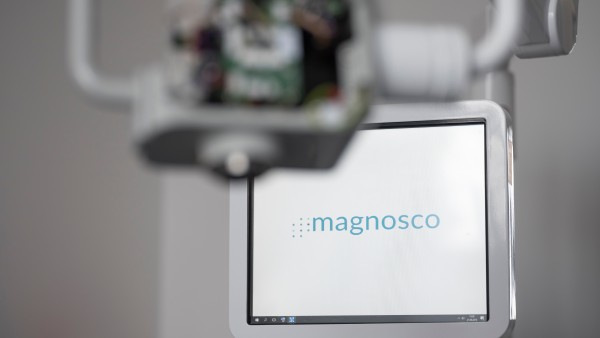
Development work at Magnosco continues: the screening device in miniature form is planned.
Since March 2020, the new investor Corecam Capital Partners has been providing tailwind for further development to Magnosco. A DermaFC device in miniature form is planned, as well as extending its application field to other forms of skin cancer. Thomas Diepold is proud of their accomplishments so far: "In order to bring a medical product to market, you don't just need an innovative idea, you also need stamina to implement it. We want to be able to offer this diagnostic tool to every doctor and thus help to reduce the rising rates of skin cancer. I think it's wonderful to be able to work on something so important here!"
The described project contributes to the following United Nationsʼ Sustainable Development Goals
Goal 3: Ensure healthy lives and promote well-being for all at all ages
Health is the goal, prerequisite and result of sustainable development. Supporting health is a humanitarian requirement – both in developed and developing countries. Around 39 per cent of the worldʼs population lives without health insurance. In poor countries, this amount even exceeds 90 per cent. Many people still die from diseases that are not necessarily fatal with the right treatment, or that could easily be prevented with vaccinations. Strengthening health systems, particularly by making vaccines widely available, can make it possible for us to drive these diseases back and even eradicate them by 2030.

All United Nations member states adopted the 2030 Agenda in 2015. At its heart is a list of 17 goals for sustainable development, known as the Sustainable Development Goals (SDGs). Our world should become a place where people are able to live in peace with each other in ways that are ecologically compatible, socially just, and economically effective.
Published on KfW Stories: 18 October 2018, last updated: 16 November 2020.

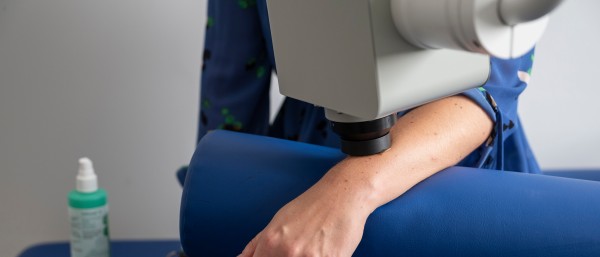
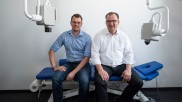
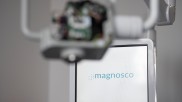

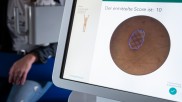
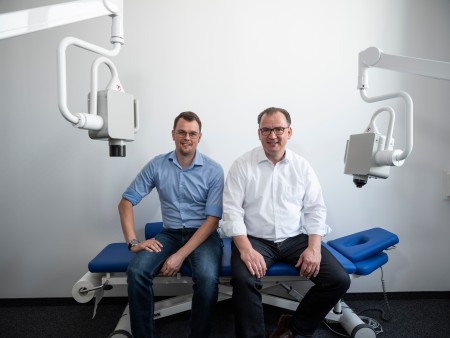
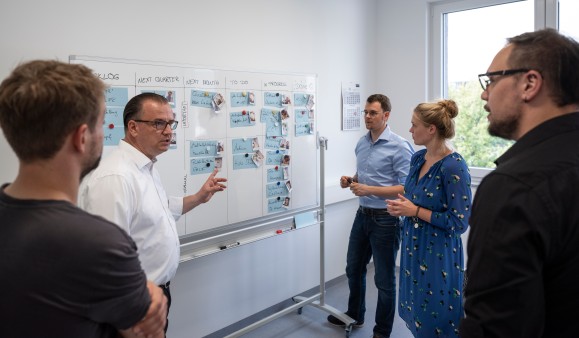
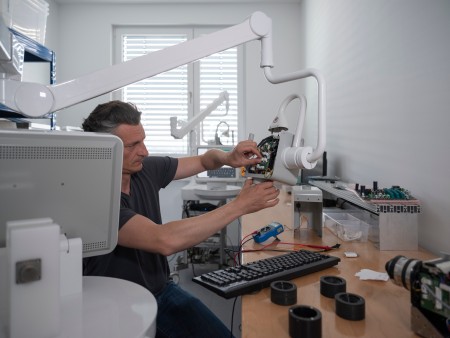
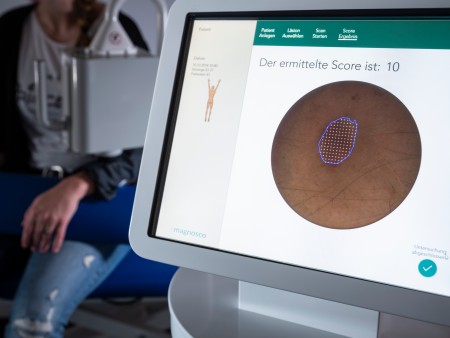





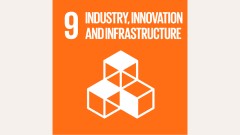

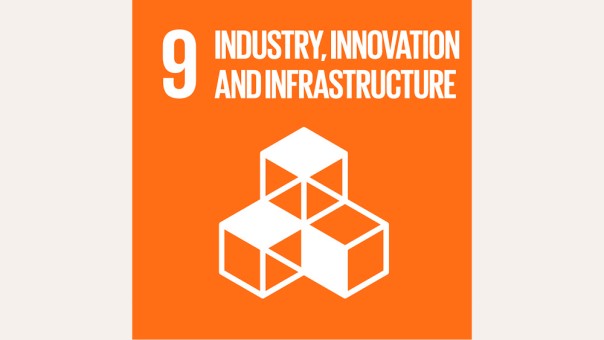
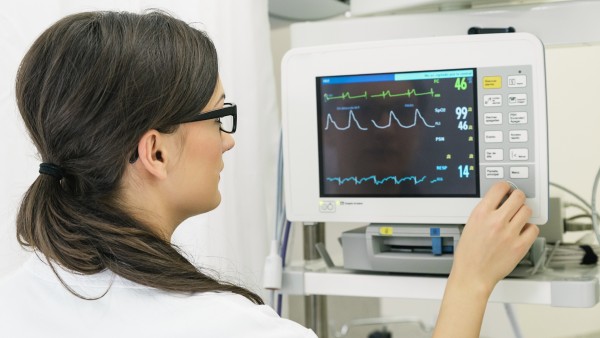


Data protection principles
If you click on one of the following icons, your data will be sent to the corresponding social network.
Privacy information